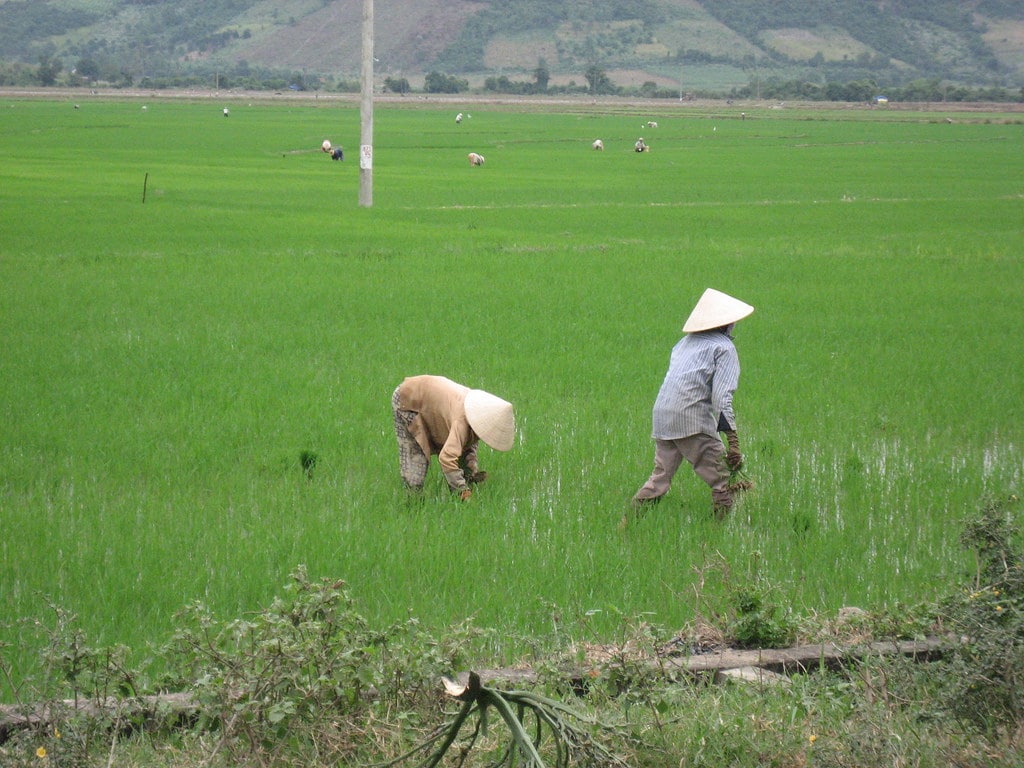Food & Climate
The decline in Malaysia’s rice crop production has raised concerns among officials about climate change, which threatens food security in the country, especially since young farmers are reluctant to grow it, and there has been a significant decline in the area under cultivation.
So, Malaysia’s Agriculture and Food Security Minister Datuk Seri Mohamad Sabu cautioned that Malaysia and the region remain vulnerable to climate change threats, emphasising the need for regional collaboration to address potential food shortages, according to a report seen by “Food & Climate” platform.
“We have enough stock of rice for at least six months. But we don’t know what will happen because of climate change, so food security is important.
“We have to work with other countries in the region to safeguard our food security. Our paddy production was 71% before, but now it is only 56%.
“About 20,000 hectares of paddy land were converted for housing projects and our young generation refuses to work in the paddy field because of low income,” he told Bernama in Phnom Penh.
Food security after Malaysia’s rice crop production decreasing
Malaysia’s Agriculture and Food Security Minister Datuk Seri Mohamad Sabu made a two-day visit to the Kingdom of Cambodia at the end of February to hold discussions with his counterpart — Minister of Agriculture, Forestry, and Fisheries, Dith Tina.
The main topics that surfaced during the discussion were food security, rice imports (mainly fragrant rice), aquaculture, fisheries, and agriculture sector cooperation.
Cambodia’s rice exports totaled 651,522 tonnes last year. Over 100,000 metric tonnes went to China, while Asean countries procured nearly 130,000 metric tonnes.
Cambodia exports a variety of rice, including fragrant rice, white grains, parboiled rice, and organic rice. The “Sen Kro Ob” fragrance long-grain rice variety is renowned worldwide.
Malaysia imports about 50,000 metric tonnes of fragrant rice from Cambodia, contributing to the 30%, or 700,000 metric tonnes of rice imports needed to meet the country’s national consumption of nearly 2.5 million metric tonnes.
Geopolitical challenges, uncertain export policies of rice producers, and erratic weather conditions could quickly disrupt supply in the international market, thereby impacting importing countries.

“We had a rice problem in Malaysia last year, especially when India stopped exports of white rice to other countries because they had their internal problem,” he said.
India, the world’s second major rice exporter after China, temporarily banned non-basmati rice exports in 2023, to curb high inflation and rising domestic food prices. However, last year, the Indian government lifted the ban.
Mohamad Sabu said Malaysia and Cambodia did not sign any agreements during his recent trip but discussed rice production extensively, as the kingdom produces five times more rice than Malaysia.
“Cambodia has plenty of paddy farms and produces quality rice for exports. Perhaps, we could buy more in the future if needed.
Rice subsidy
Last February, the Malaysian government decided to keep the rice subsidy for 6 months to ease the burden on citizens.
So, the government’s decision to maintain the price of local white rice at RM2.60 per kilo by absorbing about RM150mil in production costs for six months comes as welcome news for many lower-income earners like them.
Therefore, the government’s decision to maintain the price of local white rice at RM2.60 per kilo by absorbing about RM150mil in production costs for six months comes as welcome news for many lower-income earners like them.
Ahmad, from Gombak, said that with increased costs of living and Ramadan coming, this rice price control was good news.
“I usually buy the cheapest rice in the shop and most times, it is of the lowest quality.
“Knowing we can now get good- quality rice, even if it’s just for six months, is something I look forward to,” said Ahmad.
Halimah, from Cheras, said that with her monthly pay of RM1,800, she would always choose the cheapest brands of rice.
“It is good that they are starting this programme on the first day of Ramadan. We can also look forward to having good-quality rice on Hari Raya.
“However, I hope the authorities will be strict in ensuring there is no hoarding like what happened with subsidised cooking oil in packets a few years back,” she said.
Malaysia Rice Grain Wholesalers Association deputy secretary Allen Lim praised the government for its decisive and swift action in easing the operational pressures on rice mills, helping to prevent more small and medium- sized mills from shutting down.
He said the Ukraine-Russia conflict has led to an increase in fertiliser prices.

“In addition, the cost of white rice packaging has also risen, adding more pressure on wholesalers. The government’s decision to raise the floor price of padi from RM1,300 to RM1,500, while keeping the price of local white rice at RM2.60 per kg, has further increased the burden on wholesalers.
“Fortunately, this time we see the (Agriculture and Food Security) Ministry stepping in to help adjust the padi sector,” Lim added, according to “Asian News”.

